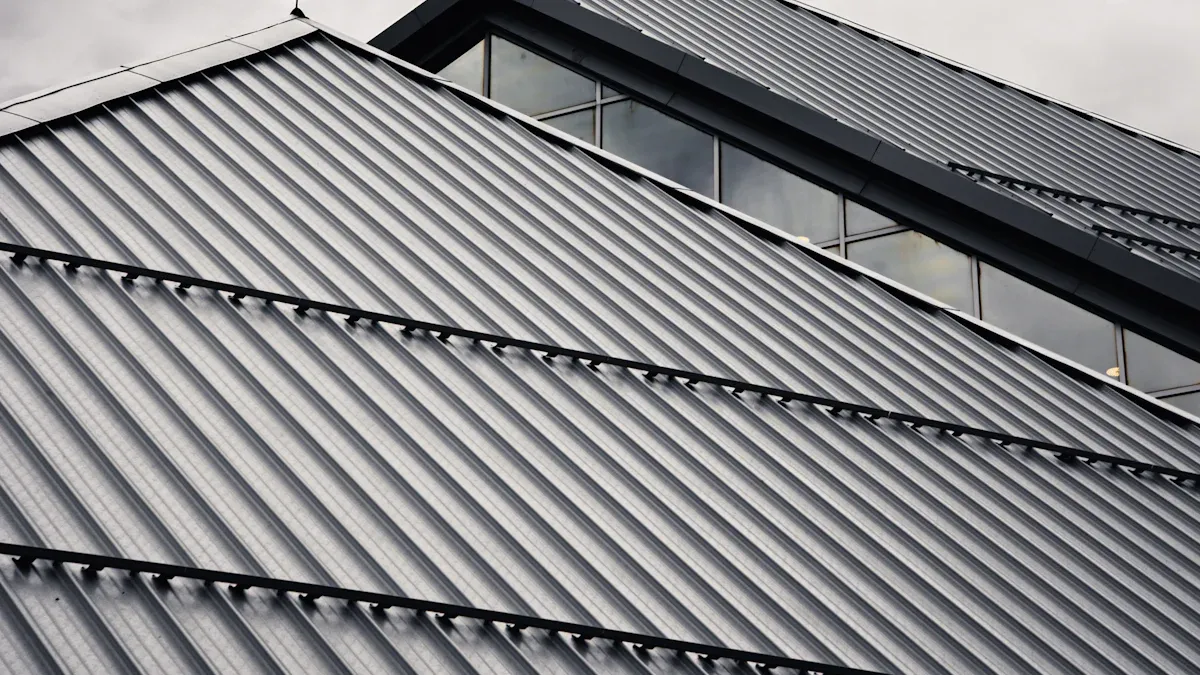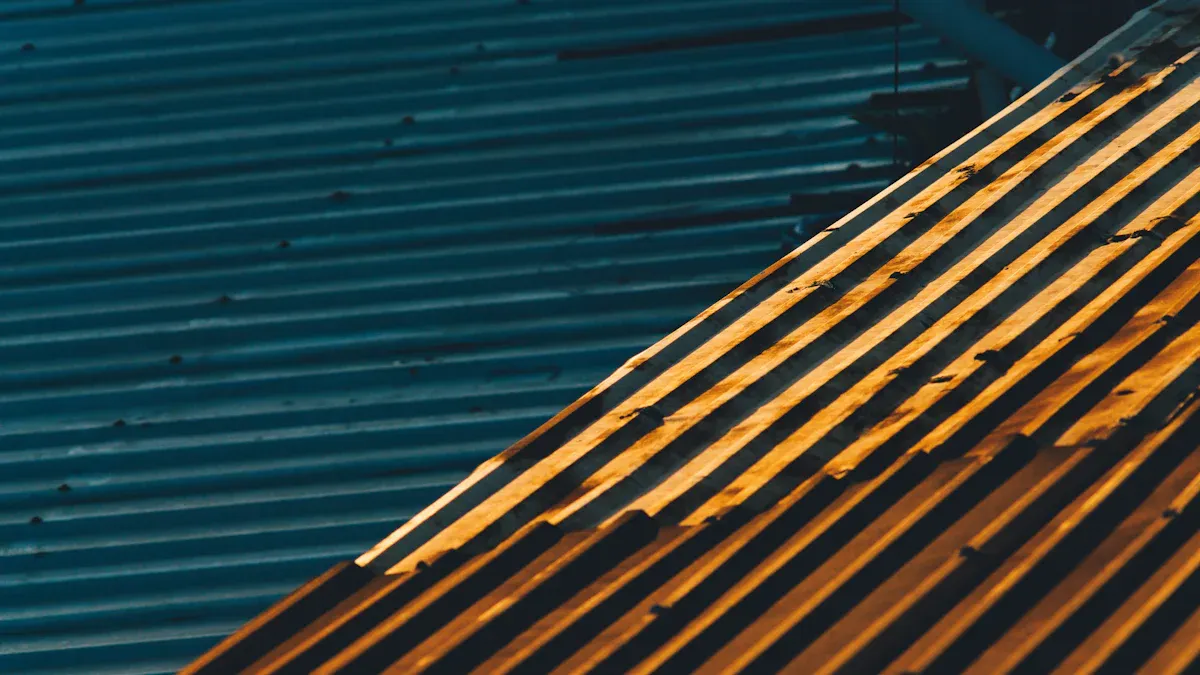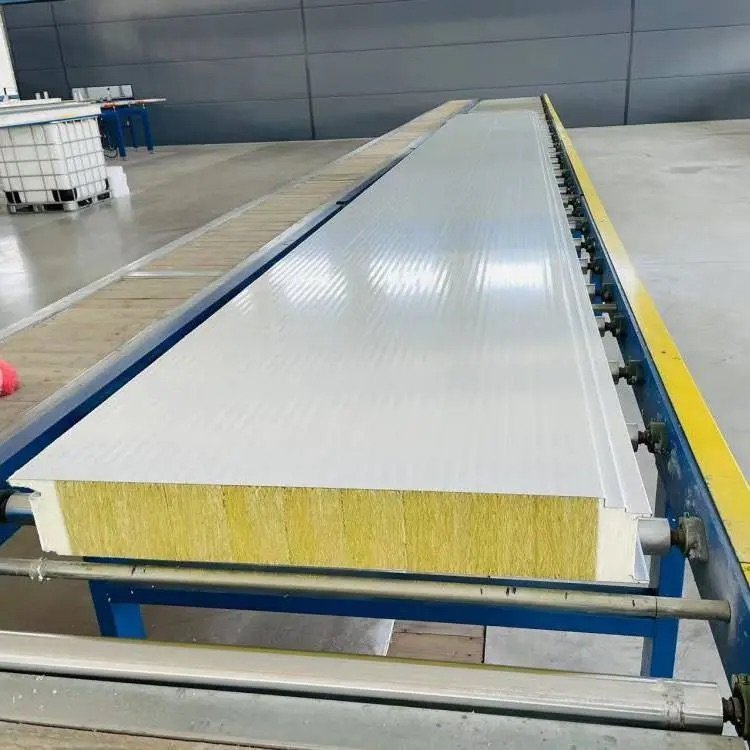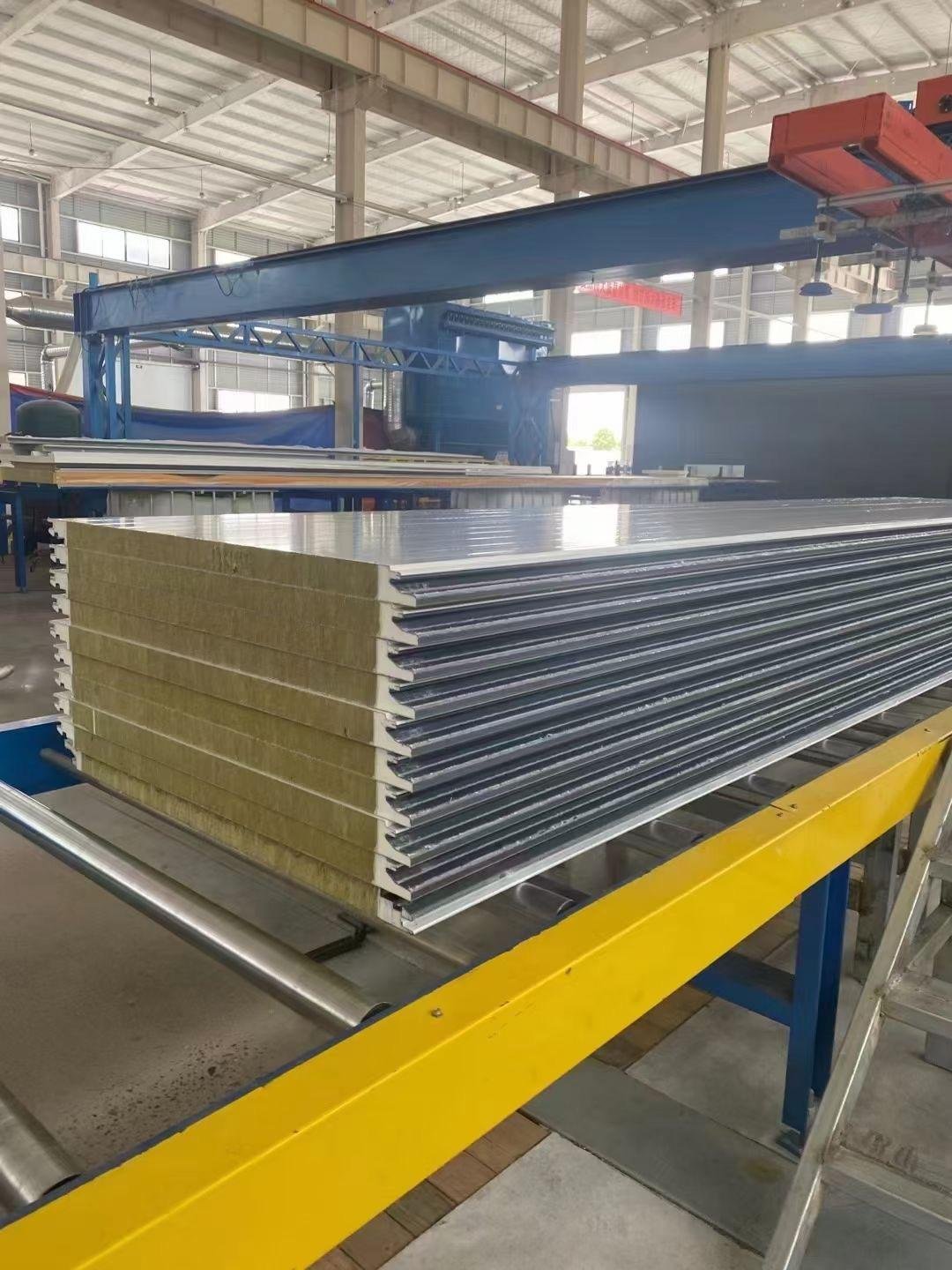
A sandwich panel roof is a new type of roofing material. It is made with two strong outer layers and a light insulating middle. This special design helps with insulation, strength, and support in buildings.
It’s interesting to know that more people are using sandwich panels. For example:
The market was worth $20.21 billion in 2021 and might grow to $39.16 billion by 2031.
More cities and growing populations have increased the use of these roofs.
This smart building material saves energy and lasts a long time. That’s why it’s popular in modern construction.
Key Takeaways
Sandwich panels have strong outer layers and an insulated center. They save energy and reduce noise well.
These roofs are tough and handle bad weather easily. With good care, they last 30 to 50 years.
They are quick to install and save money on labor. Large areas can be covered in less time.
Sandwich panels can be used for factories, offices, and homes. They are a common choice in new buildings.
Using sandwich panels can lower energy bills and upkeep costs. They are also good for the environment.
Composition and Structure of Sandwich Panel Roofs

Materials Used in Sandwich Panels
Outer Layers
The outer layers are very important for sandwich panels. These layers are usually made of strong materials like steel or aluminum. The outside layer protects the roof from rain, wind, and sunlight. The inside layer, seen from indoors, looks nice and adds support. Both layers work together to make the panels strong and durable.
Insulating Core
The core in the middle is the most important part. It keeps the building warm or cool and blocks noise. Common core materials include foam like polyurethane or polyisocyanurate, and rockwool. Each material has special benefits. For example, polyurethane foam keeps heat in, while rockwool resists fire. EPS cores are also popular because they are light and affordable.
Design Features of Sandwich Panel Roofs
Layer Arrangement
Sandwich panels have three or more layers stacked together. The outer layers hold the core in the middle, making the panel light but strong. This design helps save energy and improves strength. The core can be thick or thin, depending on how much insulation you need.
Material Properties
The materials used in sandwich panels are chosen for their quality. PIR and PUR panels can hold themselves up without extra support. These panels are also recyclable, which helps the environment. They are light, about 20 kg/m², and easy to install. The type of core affects how well the panel keeps heat, blocks sound, and resists fire, making buildings work better.
Benefits of Sandwich Panel Roofs
Durability and Longevity
Weather Resistance
Sandwich panels are made to handle tough weather. The outer layers, often steel or aluminum, protect from wind, rain, and sunlight. These panels stay strong and look good for decades. Even in extreme weather, they last 30 to 50 years with care. This makes them a reliable choice for buildings.
Corrosion Prevention
The materials in sandwich panels resist rust and corrosion. This stops damage, especially in wet or coastal areas. Choosing corrosion-resistant panels means less maintenance and a longer roof life. This makes them a great option for lasting construction.
Insulation Capabilities
Thermal Efficiency
Sandwich panels are great at keeping heat in or out. The core, like polyurethane or mineral wool, blocks heat transfer. This means you don’t need extra insulation. It keeps buildings warm in winter and cool in summer. You save energy and lower heating and cooling costs over time.
Acoustic Insulation
The core also reduces noise by absorbing sound waves. This makes sandwich panels perfect for noisy places. Near roads, airports, or factories, they create quieter indoor spaces. Schools, hospitals, and offices benefit from this sound control.
Ease of Installation
Time-Saving Process
Sandwich panels are light and easy to install. A team can set up 600 m² in 8 hours. This saves time and reduces labor needs. Their lightweight design also makes transport and handling simpler.
Cost-Effectiveness
Quick installation lowers costs by needing fewer workers. Less time spent on setup means lower labor expenses. Their durability and low upkeep save money over the years. Sandwich panels offer both short-term and long-term savings.
Tip: Want faster building and lower costs? Sandwich panels are a smart pick.
Applications of Sandwich Panel Roofs

Industrial Applications
Warehouses
Sandwich panels are great for warehouse roofs. They keep indoor temperatures steady, which is important for storing goods. Their light weight makes them easy to install, saving time on big projects. These panels also resist rust and bad weather, lasting a long time in tough conditions.
Factories
Factories need strong and energy-saving roofs. Sandwich panels provide insulation and block noise, making them perfect for loud factories. Fire-resistant cores, like rockwool, add safety. This makes them a dependable choice for factory roofing.
Commercial Applications
Shopping Centers
Shopping centers use sandwich panels for their many benefits. They keep the building warm or cool and reduce noise. Architects can design them to look modern and stylish. These panels are popular because they save energy and are quick to install.
Office Buildings
Office buildings like sandwich panels for saving energy. They lower heating and cooling costs, helping businesses go green. Their light weight and easy upkeep make them affordable. Panels can also be customized to fit both looks and needs.
Residential Applications
Modern Homes
Modern homes use sandwich panels for better insulation. They keep homes warm in winter and cool in summer. These panels last long and need little care, saving money. They also block noise, making homes quieter.
Prefabricated Buildings
Prefabricated buildings often use sandwich panels for roofs and walls. Their light weight makes them easy to move and build with. They work well in all climates and are budget-friendly. As people focus on eco-friendly options, these panels are becoming more common.
Note: Sandwich panels are growing in demand because they save energy and are easy to install. This trend shows their rising use in both homes and businesses.
Installation Process of Sandwich Panel Roofs
Preparation for Installation
Site Assessment
Before starting, check the site carefully for problems. Make sure the building’s structure is strong and stable. Look for uneven areas or weak spots that could cause issues. A good site check helps avoid delays and ensures panels fit well.
Material Selection
Picking the right materials is very important. Different sandwich panels work for different needs. Polyurethane cores keep heat in, while rockwool cores resist fire. Choose panels based on what your building needs, like insulation or strength. Always pick materials that save energy and meet standards.
Installation Steps
Panel Placement
First, bring the panels and tools to the site safely. Use machines to unload them without damage. Build the subframe with beams and posts to hold the panels. Take off the protective film before placing the panels on the frame. Align each panel properly for a neat and secure fit.
Securing and Sealing
Attach the panels to the frame with strong fasteners. This keeps them in place during bad weather. Seal the gaps between panels to stop air or water leaks. Add flashing around the edges for extra protection and a clean look. A skilled team can install 600 m² of panels in 8 hours.
Tip: Sealing the panels well makes them last longer and saves energy.
Comparison of Sandwich Panel Roofs with Other Roofing Materials
Advantages Over Traditional Roofing
Cost Comparison
Sandwich panels often cost less over time than traditional roofs. Materials like concrete or clay tiles take more time and effort to install. Sandwich panels are light and pre-made, making setup faster. This lowers labor costs a lot. They also last long and need little upkeep, saving money. While the starting price may seem high, the total savings make them worth it.
Performance Differences
Sandwich panels work better than traditional roofing in many ways. They insulate well, keeping buildings warm in winter and cool in summer. Traditional roofs often need extra insulation, which costs more. Sandwich panels also handle bad weather better. Their strong outer layers and insulated core protect from rain, wind, and heat. This makes them a dependable choice for long-term use.
Comparison with Modern Roofing Alternatives
Benefits of Sandwich Panels
Modern roofs like metal sheets or membranes have perks, but sandwich panels stand out. They insulate against heat and noise better than many modern options. Their light weight makes them easy to move and install. You can also customize them by choosing the core material and thickness. This makes them useful for homes, offices, and factories.
Limitations of Sandwich Panels
Sandwich panels do have some downsides. They might not fit well with fancy or old-style designs. Some people like the look of clay tiles or wood shingles better. Also, if installed poorly, they can leak water. To avoid problems, make sure they are sealed and installed by experts.
Tip: Hire a pro to install sandwich panels correctly for the best results.
A sandwich panel roof is a smart choice for modern buildings. It combines strong outer layers with an insulating center. This design helps keep heat in or out and blocks noise. These roofs work well for factories, offices, and homes.
Main Advantages of Sandwich Panel Roofs:
Advantage | Details |
|---|---|
Saves Energy | Better insulation lowers energy bills and saves money. |
Reduces Noise | Great for quiet spaces like schools, hospitals, and cities. |
Long-Lasting | Handles tough weather like heat, wind, and rain easily. |
Quick to Build | Lightweight panels make building faster and need fewer workers. |
Looks Nice | Comes in many styles to match different building designs. |
Sandwich panels make building easier and faster. For instance:
Regular brickwork takes 6-7 months, but sandwich panels finish in 1 month.
The dry assembly method cuts down on time and labor.
Choosing a sandwich panel roof means saving money and energy. It’s a strong, eco-friendly, and stylish option for any building type.
FAQ
What makes sandwich panel roofs energy-efficient?
The insulating core stops heat from moving in or out. This keeps buildings warm in winter and cool in summer. It helps save energy and lowers heating and cooling bills.
What materials are used in the core of sandwich panels?
The core uses materials like polyurethane, polyisocyanurate, and rockwool. Each has special benefits. Polyurethane keeps heat in, while rockwool resists fire.
Can sandwich panel roofs handle extreme weather?
Yes, they can! The outer layers, made of steel or aluminum, protect against wind, rain, and sunlight. With good care, these roofs last for many years, even in tough weather.
Are sandwich panel roofs suitable for residential buildings?
Yes, they are! They work great for modern homes and prefabricated buildings. They insulate well and block noise, making homes cozy and energy-saving.
How long does it take to install a sandwich panel roof?
Installation is fast. A team can cover 600 m² in 8 hours. This saves time and cuts labor costs compared to regular roofing.
Tip: Hire experts to install sandwich panels for better sealing and durability.







